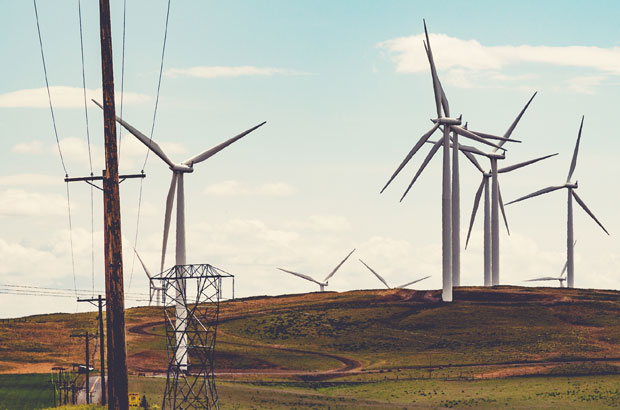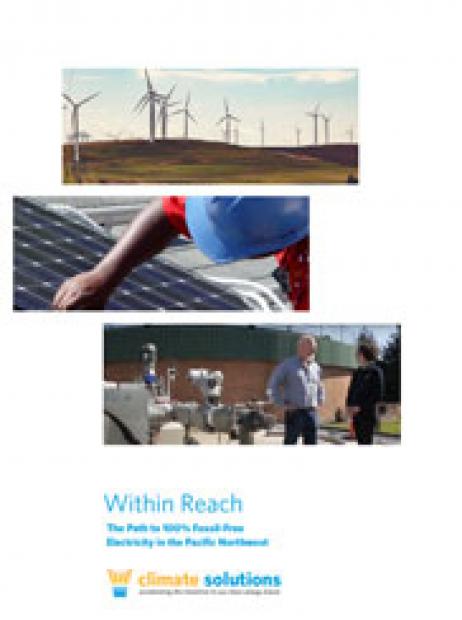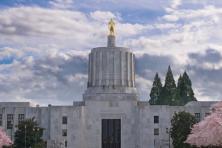As elected leaders from around the globe gather at the Global Climate Action Summit in San Francisco, Climate Solutions presented new analysis on the path for deep pollution reduction in the Pacific Northwest’s electricity sector.
“While there is very little action happening at the federal level, there’s a lot happening, and even more will happen, at the state level,” said Washington State Senator Kevin Ranker (LD-40). “There is tremendous momentum and opportunity, as we can make this happen –to go 100% renewable, 100% fossil free, in this Washington.”
Climate Solutions has commissioned new research identifying pathways to phase out fossil fuels from our power sector in the Pacific Northwest. Energy and Environmental Economics (E3) conducted the analysis by modeling several scenarios to identify the most cost-effective transition strategies. The resulting report, Within Reach: The Path to 100% Fossil-Free Electricity in the Pacific Northwest, takes a deeper look at how Washington can make an affordable, timely, and reliable transition by phasing out coal and gas and investing in renewable energy, energy storage, and energy efficiency.
“I’m really excited about the 100% clean energy policy,” stated Matthew Hepner, Executive Director, Certified Electrical Workers of Washington. “This transition will train the next generation of workers. It is absolutely feasible. It is something Washington can do more efficiently than many other states doing this. We’re ahead of the curve.“
In the study, E3 considered several different scenarios, each providing a different strategy for achieving 100% clean electricity in the region. Comparing the results of these scenarios alongside the baseline of a business-as-usual strategy leads to three important takeaways:
- Building on Washington State’s foundation of existing hydropower, we can end our reliance on fossil fuels in the power sector through more wind, solar, energy storage and energy efficiency.
- Adding renewable gas—non-fossil gas (e.g. wastewater treatment facilities, landfills, dairy farms) -- to that mix will provide a least-cost pathway to achieving 100% fossil-free electricity.
- Fossil fuels are not needed for affordable energy—we can afford the transition to clean power and create more jobs.
“100% fossil free electricity for the Pacific Northwest is within reach. This research confirms that the pathway is necessary, feasible and affordable.” Said Vlad Gutman-Britten, Washington State Director for Climate Solutions.
The West Coast is leading in accelerating the clean energy transition, most recently Governor Jerry Brown State of California signing SB 100 into law that commits the state to 100% clean energy by 2045 on September 10th. This November, Washington voters will consider Initiative 1631, the clean air, clean energy initiative on the statewide ballot that invests in clean energy and healthy communities and puts a $15/ton of carbon fee on largest polluter. Because electricity plays such an outsized role in a low-carbon future, even if all other sectors deeply decarbonize, without continued decarbonization of the electricity sector, Washington’s business-as-usual utility planning could result in the state exceeding its energy emissions target by approximately 50% unless there is a transition off fossil fuels. Washington can and should adopt a complementary policy--charting a course to a complete clean energy transition in the electricity sector.
“We are seeing first-hand the consequences of climate change happening now, reinforcing that we need to be urgent, committed, and successful in moving toward a fossil free future,” stated Washington State Representative Gael Tarleton (LD-36). “Washington is poised to make a breakthrough. We need to make faster progress building on what we have already achieved.”




